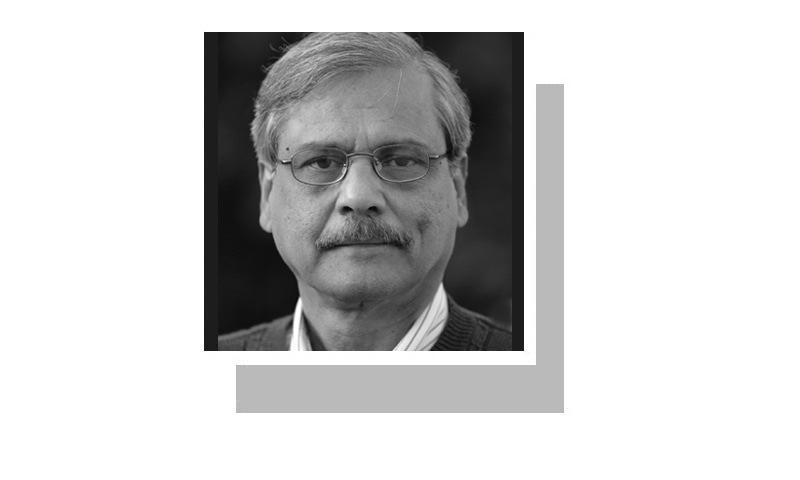LAST week, headline news on a leading private TV channel revealed that ‘a Sharif family meeting in Murree has approved the Punjab provincial government’s expansion’. The report simply reflects how the affairs of the government in the country’s biggest and most powerful province have virtually become a family enterprise.
There is nothing new about the dynastic stranglehold on Pakistani politics. But the kind of family rule that prevails in Punjab tells the story of an increasingly regressive power structure. Apparently, not only are decisions on important policy matters taken during family meetings, there is also a government-sponsored move to build a personality cult around former prime minister and head of the Sharif family Nawaz Sharif and his daughter Maryam Nawaz, Punjab’s chief minister.
It seems that most major government development projects in the province are named after either of the two. There has also been a move to rename some of the old government-run projects after the chief minister. Meanwhile, the provincial government has been running massive ad campaigns praising its own performance in various spheres, with life-sized pictures of the chief minister. Many also carry the image of her father.
This publicity drive is apparently being carried out at government expense. Recently, posters referring to the chief minister as ‘Madr-i-Millat’ (mother of the nation) appeared in the province. This campaign may not be sponsored by the provincial government but has certainly been orchestrated by the ruling party. Even with dynastic politics being the name of the game in Pakistan, rarely has the country witnessed this scale of personal glorification. Such campaigns are only seen in authoritarian regimes which lack legitimacy. But these publicity measures are short-lived and cannot serve the objective. Legitimacy and popularity cannot be won on the back of state-sponsored publicity drives. This kind of personalised publicity drive, paid for by the people’s tax money, is beyond narcissism and has clear political aims. In fact, placing personal photographs in government-sponsored ads and naming projects that use state funds after a sitting government head is seen as illegal in many countries.
The Sharifs’ personalised publicity seen in Punjab has clear political aims.
Even in Pakistan, a Supreme Court ruling in 2022, quoted by Naeem Sadiq on these pages, declared: “Paid servants of the state, constitutional office holders and politicians in government must not use their positions for personal, partisan or pecuniary gain”. It further noted: “Pakistan is not a kingdom, principality or fiefdom in which the people are to be beholden to their rulers.”
It seems that the country has actually been turned into a fiefdom where there is no respect for rules or moral values. Self-glorification of the ruling family, which returned to power with a questionable mandate, makes a mockery of the democratic process. Power is concentrated in the hands of the prime minister and the chief minister of the biggest province — both belong to the Sharif family.
Could this have happened without the establishment’s support? This self-glorification campaign is not limited to civilians and extends to the military leadership. It seems that the entire image-building effort for the civilian and military leadership is part of a concerted plan to strengthen the existing hybrid power structure. Behind the civilian façade, the spectre of those wielding the real power looms large. The Sharif family appears content to play second fiddle. After all, the family owed its return to power to the backing of the powers that be.
More than anyone, the Sharif family should know the slippery slope of power politics. They have been on it many times in the past and were swept away by the fast-shifting sands of Pakistani politics. Yet the lure of power is so strong that they tend to forget their own example. They have readily become an instrument in the move to undermine democracy. Their own return to power is the result of a manipulated electoral process, which also explains the fragility of a fabricated power structure lacking popular mandate.
It was a remarkable turn of events that allowed the once-disgraced family to return to the corridors of power. Three-time prime minister Nawaz Sharif was unceremoniously removed by the Supreme Court in 2017 and barred for life from holding public office through a controversial verdict the following year. He, along with his daughter and other members of the family, were convicted on multiple graft charges.
After being ousted from power, he and his party tried to mobilise public support on the back of the slogan ‘give respect to the vote’. But all the pro-democracy and anti-establishment rhetoric was set aside once a deal was struck. In less than four years after his exit, the PML-N was back in power, with Nawaz Sharif’s younger brother becoming prime minister in the new set-up formed after the removal of Imran Khan through a vote of no-confidence in parliament made possible by behind-the-scenes elements.
But the elder Sharif waited for the announcement of the elections before returning to the country. In no time, his convictions were overturned by the courts and his disqualification was lifted. He was sure of his party sweeping the polls, so it must have come as a rude shock when the counting started. He lost in Mansehra and his victory in Lahore was questionable. His dream of becoming prime minister was dashed. But the establishment’s backing for his party was assured no matter what the real results were.
Most Sharif family members who were earlier convicted and suffered prison are now part of the power structure, although Nawaz Sharif has opted to stay in the background and lead the party. He seems happy with his daughter becoming the first woman chief minister of Punjab and with himself being glorified as a great leader and helmsman. The great champion of democracy does not seem to have any problem now when the sanctity of the vote is being crushed.
The writer is an author and journalist.
zhussain100@yahoo.com
X: @hidhussain
Published in Dawn, July 23rd, 2025
